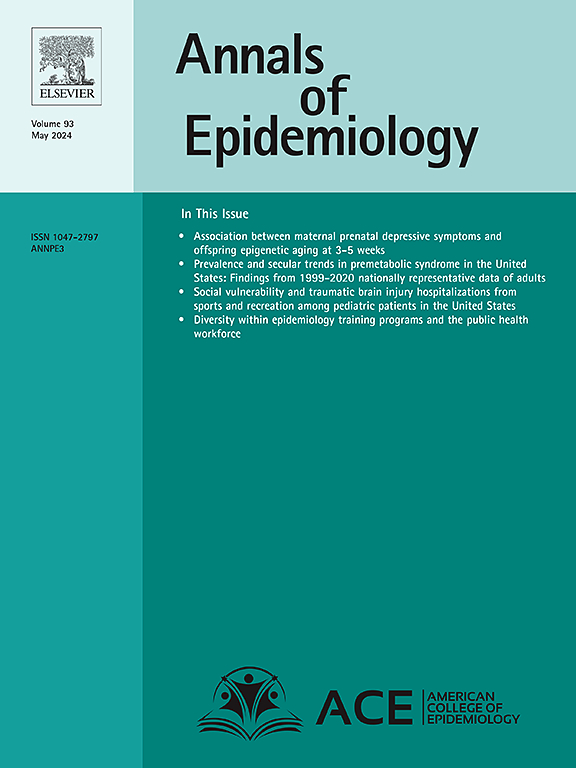Application of machine learning algorithms in an epidemiologic study of mortality
IF 3.3
3区 医学
Q1 PUBLIC, ENVIRONMENTAL & OCCUPATIONAL HEALTH
引用次数: 0
Abstract
Purpose
Epidemiologic studies are important in assessing risk factors of mortality. Machine learning (ML) is efficient in analyzing multidimensional data to unravel dependencies between risk factors and health outcomes.
Methods
Using a representative sample from the National Health and Nutrition Examination Survey data collected from 2009 to 2016 linked to the National Death Index public-use mortality data through December 31, 2019, we applied logistic, random forests, k-Nearest Neighbors, multivariate adaptive regression splines, support vector machines, extreme gradient boosting, and super learner ML algorithms to study risk factors of all-cause mortality. We evaluated the algorithms using area under the receiver operating curve (AUC-ROC), sensitivity, negative predictive value (NPV) among other metrics and interpreted the results using SHapley Additive exPlanation.
Results
The AUC-ROC ranged from 0.80 ─ 0.87. The super learner had the highest AUC-ROC of 0.87 (95 % CI, 0.86 ─ 0.88), sensitivity of 0.86 (95 % CI, 0.84 ─ 0.88) and NPV of 0.98 (95 % CI, 0.98 ─ 0.99). Key risk factors of mortality included advanced age, larger waist circumference, male and systolic blood pressure. Being married, high annual household income, and high education level were linked with low risk of mortality.
Conclusions
Machine learning can be used to identify risk factors of mortality, which is critical for individualized targeted interventions in epidemiologic studies.
机器学习算法在死亡率流行病学研究中的应用。
目的:流行病学研究对评估死亡危险因素具有重要意义。机器学习(ML)在分析多维数据以揭示风险因素与健康结果之间的依赖关系方面非常有效。方法:利用2009年至2016年收集的国家健康与营养检查调查数据中的代表性样本,与截至2019年12月31日的国家死亡指数公共使用死亡率数据相关联,应用logistic、随机森林、k-近邻、多元自适应回归样条、支持向量机、极端梯度增强和超级学习者ML算法研究全因死亡率的危险因素。我们使用受试者工作曲线下面积(AUC-ROC)、灵敏度、负预测值(NPV)等指标对算法进行评估,并使用SHapley加性解释对结果进行解释。结果:AUC-ROC范围为0.80 ~ 0.87。超级学习者的AUC-ROC最高,为0.87 (95% CI, 0.86─0.88),灵敏度最高,为0.86 (95% CI, 0.84─0.88),净现值最高,为0.98 (95% CI, 0.98─0.99)。死亡的主要危险因素包括高龄、大腰围、男性和收缩压。已婚、高家庭年收入和高教育水平与低死亡率有关。结论:机器学习可用于识别死亡的危险因素,这对于流行病学研究中个性化的针对性干预至关重要。
本文章由计算机程序翻译,如有差异,请以英文原文为准。
求助全文
约1分钟内获得全文
求助全文
来源期刊

Annals of Epidemiology
医学-公共卫生、环境卫生与职业卫生
CiteScore
7.40
自引率
1.80%
发文量
207
审稿时长
59 days
期刊介绍:
The journal emphasizes the application of epidemiologic methods to issues that affect the distribution and determinants of human illness in diverse contexts. Its primary focus is on chronic and acute conditions of diverse etiologies and of major importance to clinical medicine, public health, and health care delivery.
 求助内容:
求助内容: 应助结果提醒方式:
应助结果提醒方式:


